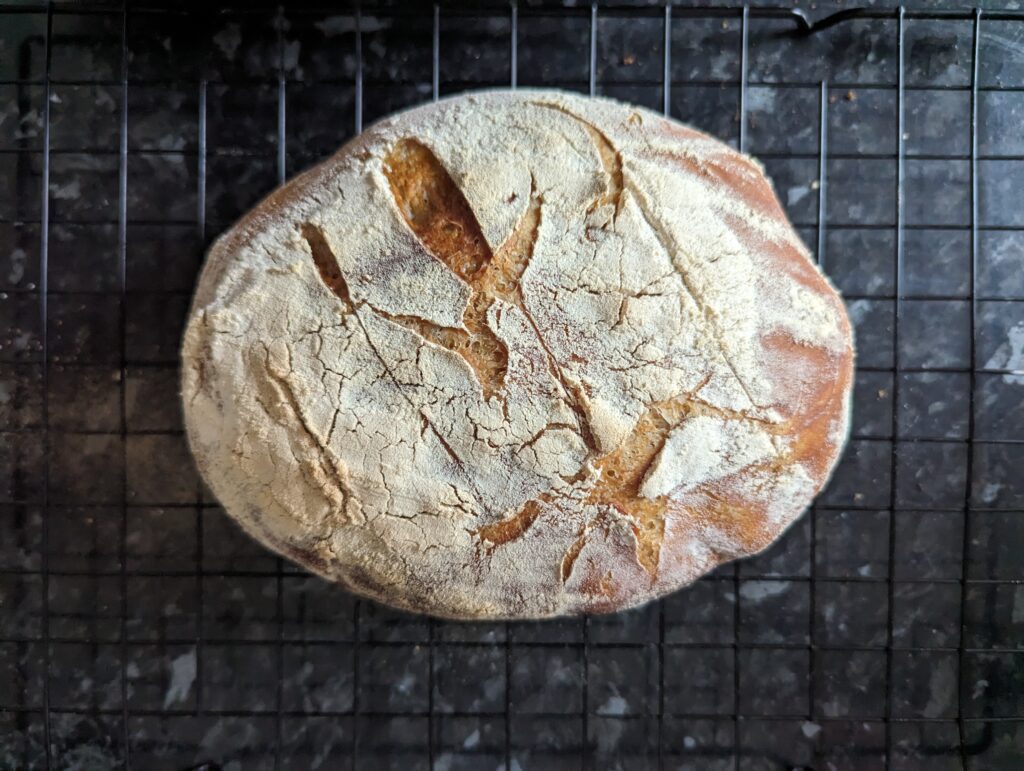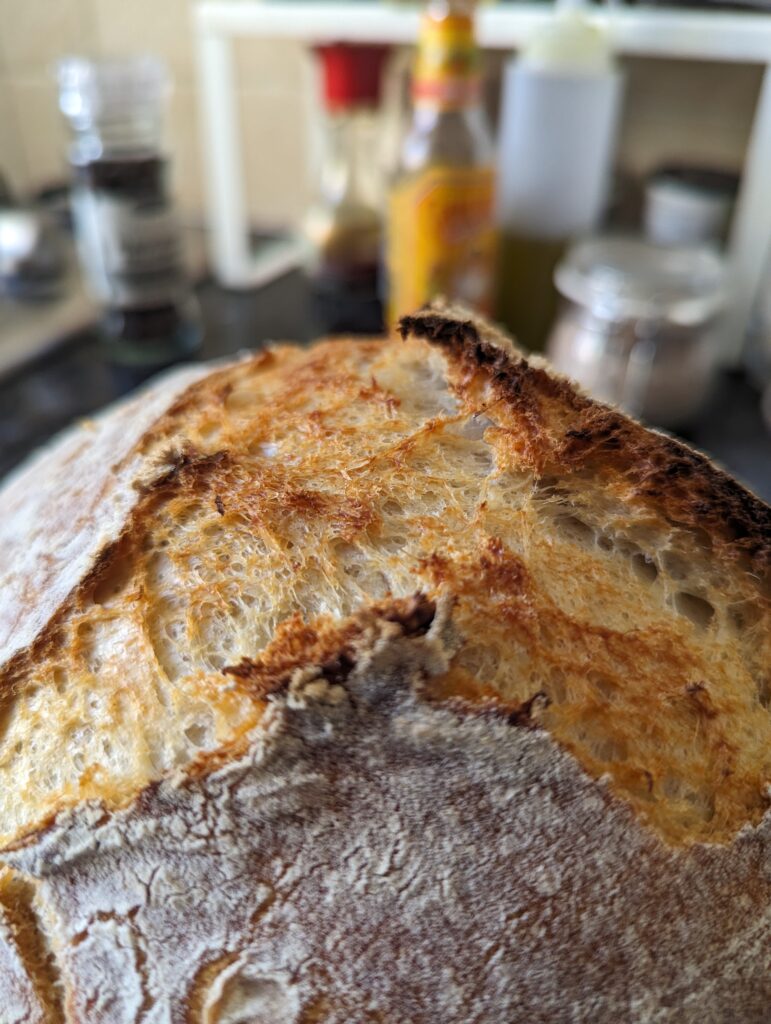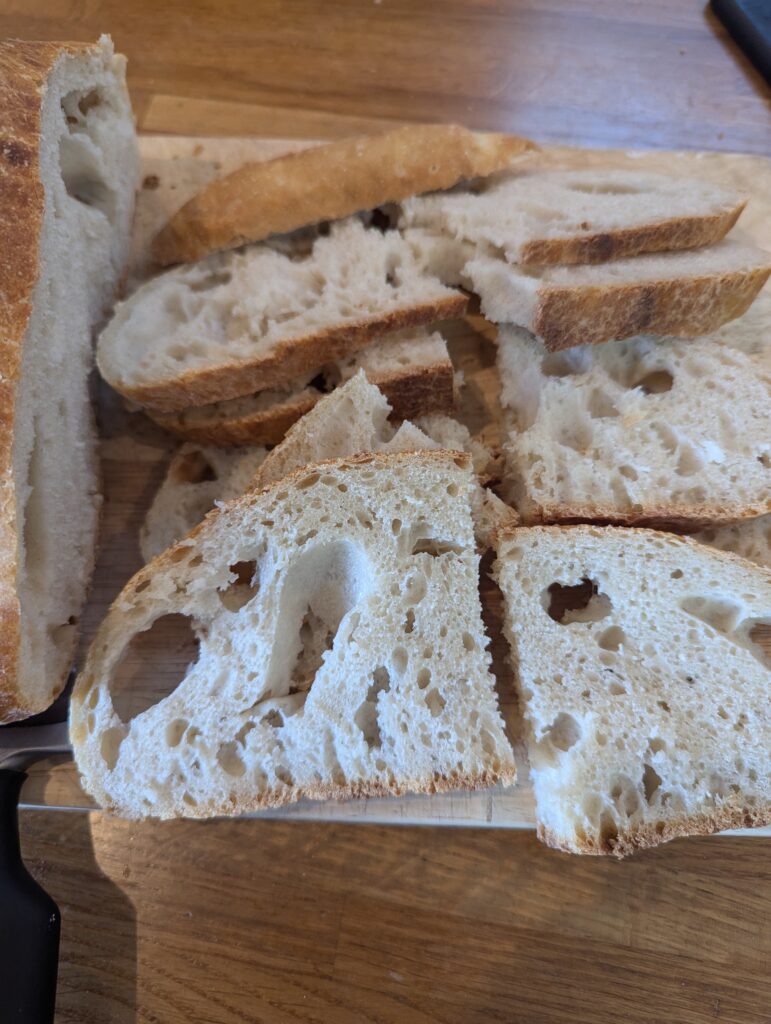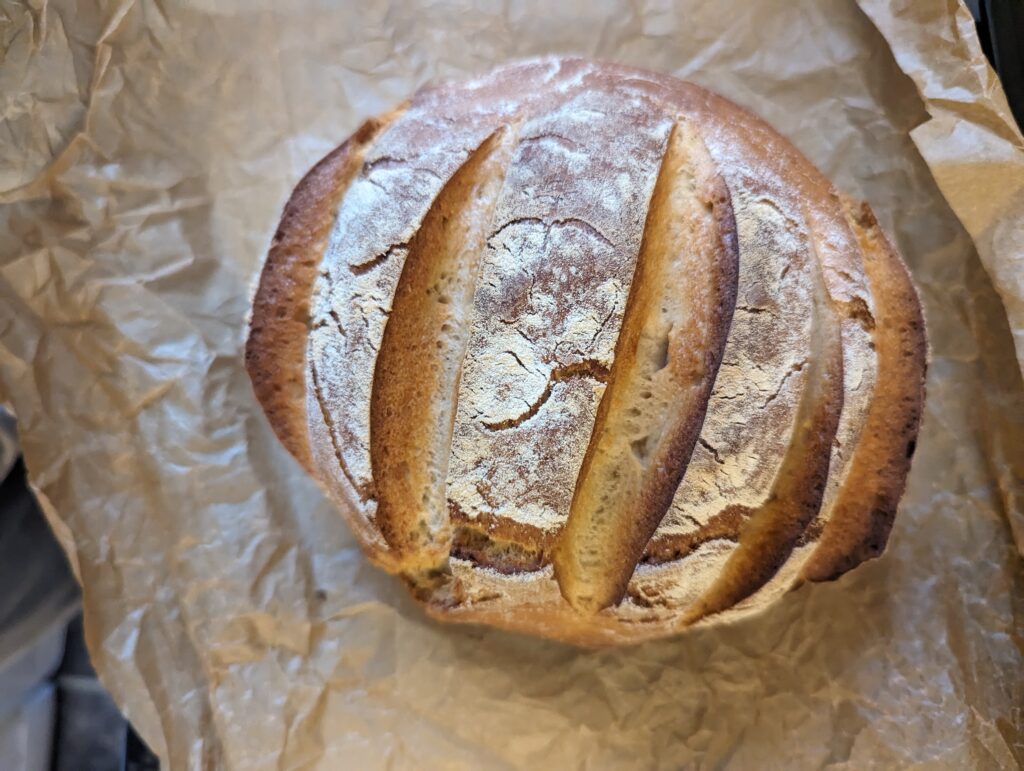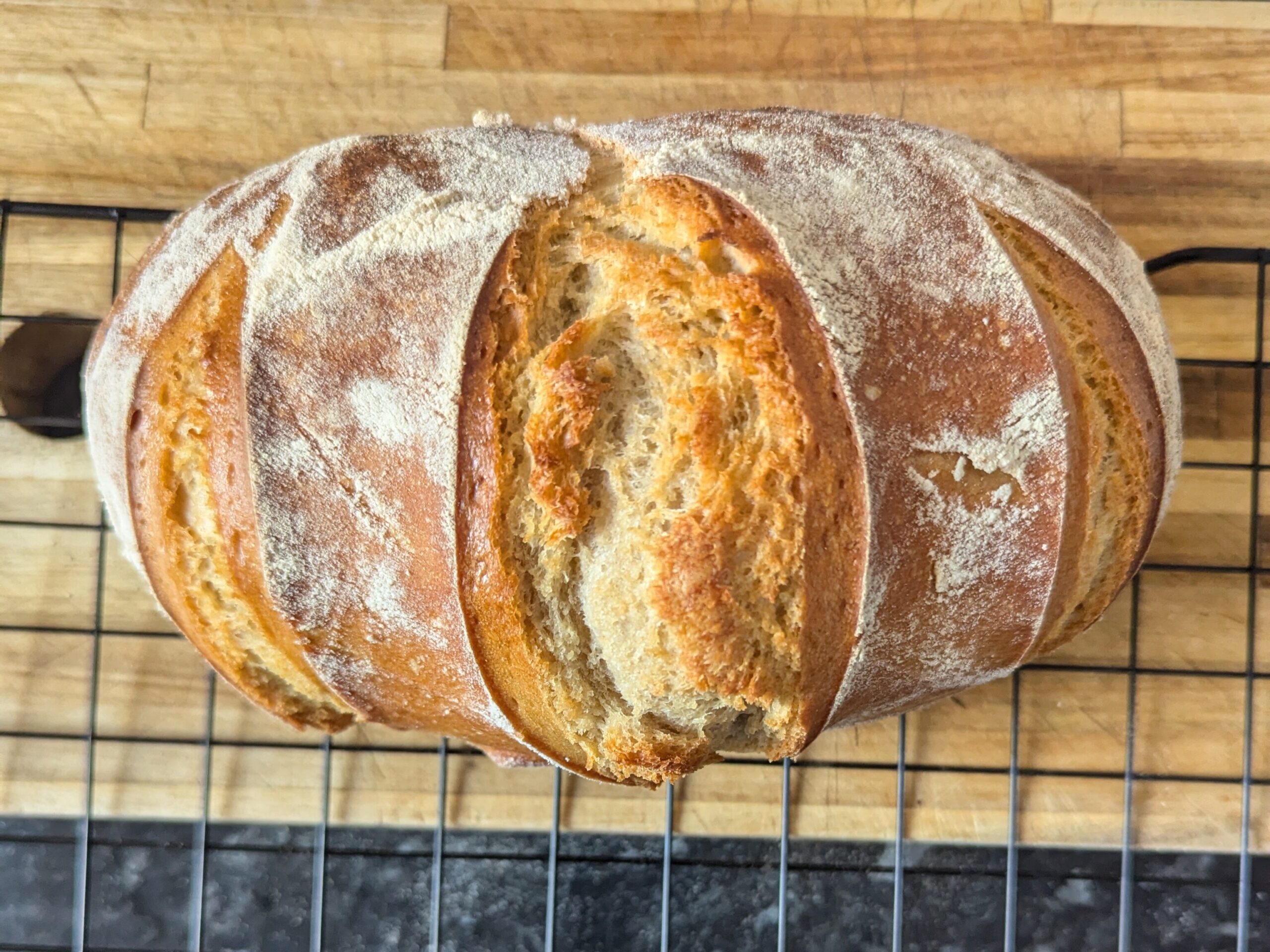
Ingredients
600g Strong white flour, plus extra for dusting
Tablespoon sourdough starter
400g tepid water
(optional) small spoon rice flour
(optional) handful ice cubes
Method
Step 1
Measure out 100g of the flour, and 100g of tepid water and combine to a thick paste. Mixing a tablespoon or 2 of sourdough starter to this paste makes a levain. I usually like to leave this levain for at least an hour, until it starts to bubble with active starter. This will vary in time based on how “hungry” your starter is, and how warm your kitchen is.
Step 2
Measure out 500g of flour into a fresh bowl. Add 300g of warm water to the levain and mix to loosen. Add your liquid and flour together. Thoroughly combine. You can get your hands messy or use a spatula.
Step 3
Ferment! Add a tea towel over your combined dough to ferment at room temp for between 4 and 24h, or add it to a container and ferment in the fridge for up to 1 week (beware that longer ferments may not get a great rise and are more suitable for pizza dough.
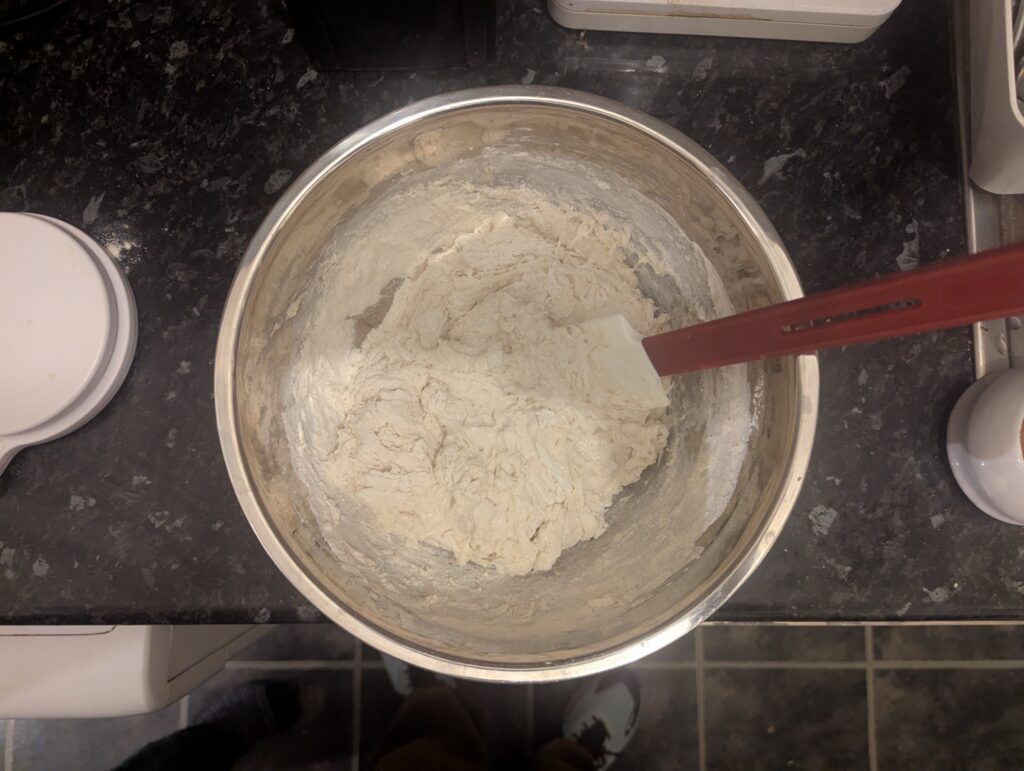
Step 4
After your desired fermentation window, scrape the dough out of the bowl and onto a floured surface. Note that if you have done fridge fermentation, it can be useful to bring the dough out 1 hr before you turn it out. This lazy method produces a very sticky shaggy dough at this point, so don’t be afraid to add flour to bring it together. You’ll want to knock the bread back, and tuck the edges under the dough continuously to make a rounded cob shape. Place the loaf onto a baking sheet and cover with a tea towel until it begins to rise again. Preheat the oven to 220C (optionally with a dutch oven inside.)
Step 5
Right before you put the loaf in the oven, dust it lightly with some flour. I love using rice flour for this. You’ll also need to make a few slashes in the top to allow the bread to rise in the oven. Use a very sharp knife and make the slashes gently.
Step 6
Place your loaf in the oven (optionally also inside the dutch oven with the lid on), and throw a few ice cubes in the bottom of the oven too. This helps to create steam which helps to develop the crust.
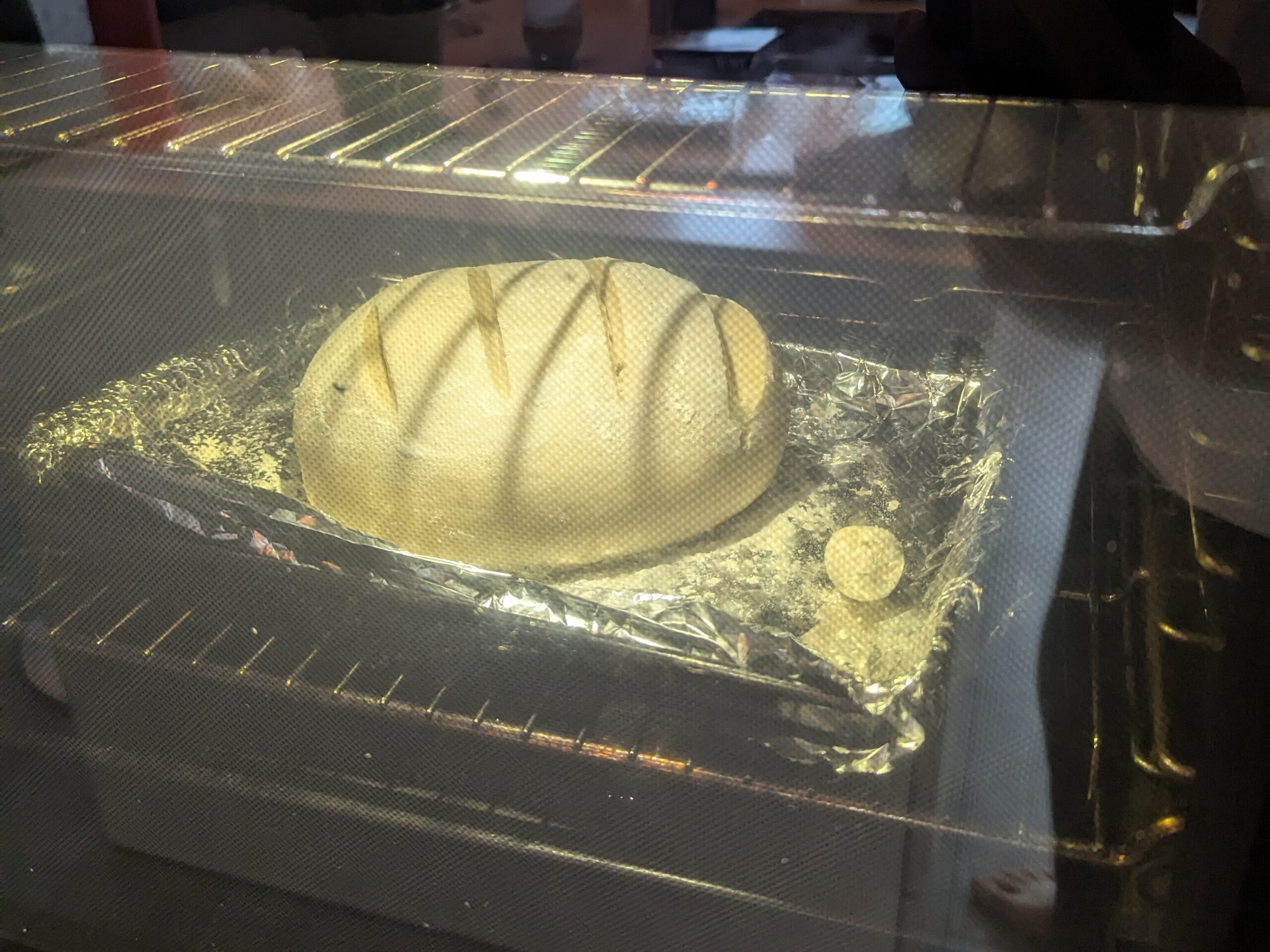
Step 7
Bake for 30 mins. Check the colour and bake for up to another 10 mins for desired browning.
If using a dutch oven, bake for 20 mins, then remove the lid. Check the colour after a further 10 mins. Check the colour and bake for up to another 10 mins for desired browning.
Step 8
For best results, let cool for an hour before slicing. It’ll still be warm inside, but will have had time to stabilise.
